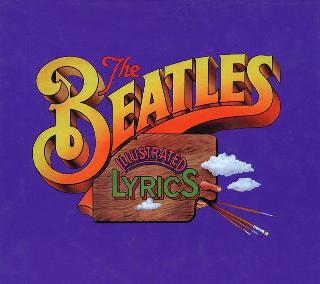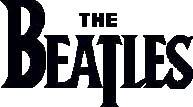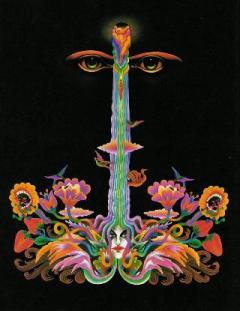Index
Home
Vorige
The Night Before
Composer(s) : Lennon and McCartney
Year : 1968
Chords/Tabs: The Night Before
Notes on "The Night Before" (TNB)
KEY D Major
METER 4/4
FORM Intro -> Verse -> Verse -> Bridge -> Verse -> Verse (half solo) ->
Bridge -> Verse -> Outro (w/complete ending)
GENERAL POINTS OF INTEREST
Style and Form
- With its strong bluesy foreground that is so nicely balanced out by
the predominantly pop style that underlies it, this song provides about
as good an example as you'll find of the Beatles predilection on the
threshold of mid-career for a synthesis of their erstwhile desire
to play genuine 12-bar blues with an even greater passion to transcend
that it.
- They use the standard long form here, one of their favorites,
with its two bridges that are separated by two verse sections, the
second one of which is partly for instrumental solo.
"From Me To You" and "A Hard
Days Night" come to mind as archetypal examples, but there are many
others as well.
- In addition, there is an almost subliminally unifying effect
created by the recurring use of chromatic shifts and scale fragments;
anticipatory shades of Paul's later "You Won't See
Me", which happens
to share a certain amount of similarity with this song at the level of
its subject matter.
Melody and Harmony
- The song utilizes a relatively large number of chords (eight!),
fully half of which are foreign in one way or another to the home
key. In addition to the I, IV, V, and vi which are diatonically
indigenous, we also find here the flat-III, minor iv, flat-VII,
and V-of-V.
- In terms of chord progressions, this just may be the first place
that The Beatles would use flat-VII in between I and IV. The song
also features the first example we've seen in quite a while of the
minor iv used in a Major key. Ironically, although I tend to
associate the use of this chord especially with John, the most
recent example we had seen was back in Paul's
"I'll Follow The Sun".
- Chromatic shifting between two flavors of a note appears here under a
number of guises. The first and most prominent example is in the
opening phrases of the verse where the melodic prominence given to
the bluesy minor 3rd (F natural) in phrase 1,2, and 4 is contrasted
with a switch to the major 3rd (F#) near the end of phrase 3. Note,
by the way just how juicy a cross-relation that heavy use of F natural
makes against the D Major chords in the accompaniment.
- Other deployments of the same basic idea are found in the alternation
between B natural and B flat implied by the chord change between b minor
and g minor in phrase 3 of the verse, as well as the melodic noodling
around D/C# and E/D# at the beginning of the bridge.
Arrangement
- Paul's vocal lead is double tracked throughout and he repeatedly
throws in a little Gershwinesque grace note in the final phrase
of the verse (on the word "did") that reminds me of something
John did in "I'm A Loser".
- The vocal arrangement of the verse is of particular interest. What
appears at first as a garden variety call-and-response pattern actually
turns out to be a single thread vocal line shared, "hocket"-like, between
the double-tracked solist (Paul) and the backers. Last time we had
seen anything quite like this was "Please Please Me".
"Help!" and "You're Going To
Lose That Girl" use a device that is, while similar to the hocket,
more in the realm of a gloss or commentary on the main line rather
than a sharing of it.
- The prominent appearance of the electric piano here yet again would
seem to suggest that its sound was something the group had somewhat
faddishly latched onto during the late spring of '65.
SECTION-BY-SECTION WALKTHROUGH
Intro
- This is one of those songs where the instrumental texture is relatively
unvaried throughout. I'd dare say that if you could find yourself a
bootleg of just the backing track for it, it would sound just like the
intro.
- This section is one long eight-measure phrase with a slow harmonic
rhythm and a chord progression that neatly opens out to V, thereby
providing motivation for the verse which follows:
|D |- |F |- |G |- |A |- |
D: I flat-III IV V
- Two nice rhythmic details to listen out for -- Paul's C# -> D
anticipation of the first downbeat; and the manner in which the
individually syncopated parts combine during in the last couple
measures to make for a compound rhythm that is very close to even
eighth notes.
Verse
- The verse is a standard sixteen measures long and is made up of four
equal phrases that form a poetic pattern of "aabc":
------------------------------ 2X -------------------------------
|D |C |G |A |
I flat-VII IV V
|b |g |b |g |
vi iv vi iv
|D |G |D |- |
I IV I |- |
verses which are followed by another verse:|F G |
|flat-III IV |
- The narrative and poetic structure is abetted by the harmonic scheme.
The first two phrases open up widely to the V chord. The third phrase,
rather than providing any kind of resolution, further heightens the
suspense and even adds a touch of anxiety by its staying away from
I and introducing the ominous sounding minor iv chord. As is typical,
the final phrase puts everything right with its return to I. Note,
though, how in those verses that are followed by another verse the
harmonic ending is modifed so that a motivation for a return to I
at the beginning of the next verse is motivated by a forced move away
from I at the last moment.
- A faintly stuffy, pedagogical observation about first minor iv chord
in phrase 3: it could alternately be parsed as ii6/b5 because of the
e in the melody. To the extent that both ii and iv denote a subdominant
function though, the difference between the two labels is somewhat moot.
- Although the lead and backing vocalists share the melodic spotlight
in the first two phrases, they interestingly overlap at the "seams" of
their respective parts. This creates a special effect at the beginning
of the second phrase, where the backers falling away from the lead
subtly suggests a kind of sighing accompaniment. The manner in which
the backers continue on in the third phrase entirely as part of the
background wash, only to dramatically desist entirely for the final
phrase, also makes for a dramatic effect.
- George, likely feeling finally unbound after keeping such a low
profile in the first half of the song, introduces his solo section
with an enthusiastic "Yes!". There's a more half-hearted "yeah"
that precedes the second bridge, which for all we know, just might
be another one of those infamous "anomalies."
- The half-section's worth of guitar solo is doubled at the octave
and definitely sounds more worked out and painfully practiced than
it does improvised; the tip-off being in the way that both phrases of
it are repeated identically. The interjectory nature of the solo and
the dissonant manner in which its melodic content rides roughshod over
the chords below it sound peversely out of style with the rest of the
song. It's as if they were trying to achieve in music the same kind
of obtuse non-sequitor which peppers their onstage verbal antics.
Bridge
- The bridge is eight measures long and built out of two equal phrase:
|A |D |G |- ||b |E |A |- |
V V-of-IV IV vi V-of-V V
- As is a well-established convention, a subtle change of the percussion
pattern is used here to help the bridge sound more set-off from the
surrounding verses.
- With the exception of the intro, the harmonic rhythm of this song is
relatively fast throughout. The phrase endings of this bridge provide
a notably rare and brief breath-catching respite.
- The song makes a slight, short-lived modulation toward the key of
G, but it pivots right back around to set up a return to the home key
with its big finish on the V chord, set up on a silver platter by
V-of-V.
- The melodic climax of the entire song occurs at the very end of
this section on the high note 'A'. This is felt as especially
dramatic in context of the constricted melodic range of the song
overall; you'll note how the verse rather butts its head, so to speak,
up against a ceiling of G.
Outro
- The complete ending consists of a simple petit reprise of the final
phrase that is easily built out of an extension to the end of the
verse:
|reprise|- guitar riff ||
|D |G |D |F |D |- ||
I IV I flat-III I
- The return of the solo guitar for a final fanfare lick lends a
classic touch of unity, and anticipates what is essentially the
very same gesture that would appear much later in "Penny
Lane"!
SOME FINAL THOUGHTS
- At a high level, this song thematically belongs to one of the
archtypal sub-genres of the two-minute pop song: the one in which
the protagonist, post-breakup, acknowledges what a good thing he
had in retrospect and expresses the fond hope and prayer for a
reconciliation.
- At a closer level of detail, this one bears a surprising amount of
comparison with one very specific other song of Paul's songs; one
written pretty much around the same time. Granted, this one is written
in direct address to the girl and openly begs for another chance.
The other song, in contrast, speaks of the girl in third person and,
in spite of an expressed longing for a reversal of the situation, the hero
there seems, with grim resignation, to better accept his fate.
- And yet, the common demoninator between the two is in their
focus on the past, and in their desire for an impossible turning back
of the clock by a mere 24 hours. In this sense, in spite of all
other differences in musical style, the two songs are closely
enough related that I could almost imagine their two titles reversed
or comingled: "Last Night" and "The Day Before" :-).
Regards,
Alan (awp@bitstream.com OR uunet!huxley!awp)
---
"I will be pleased, men, to see the earth disintegrated." 112392#70
---
Copyright (c) 1992 by Alan W. Pollack
All Rights Reserved
This article may be reproduced, retransmitted, redistributed and
otherwise propagated at will, provided that this notice remains
intact and in place.
Ook op Help!:
(c) 2024 Serge Girard


 (c) Alan Aldrigde, The Beatles Illustrated Lyrics
(c) Alan Aldrigde, The Beatles Illustrated Lyrics